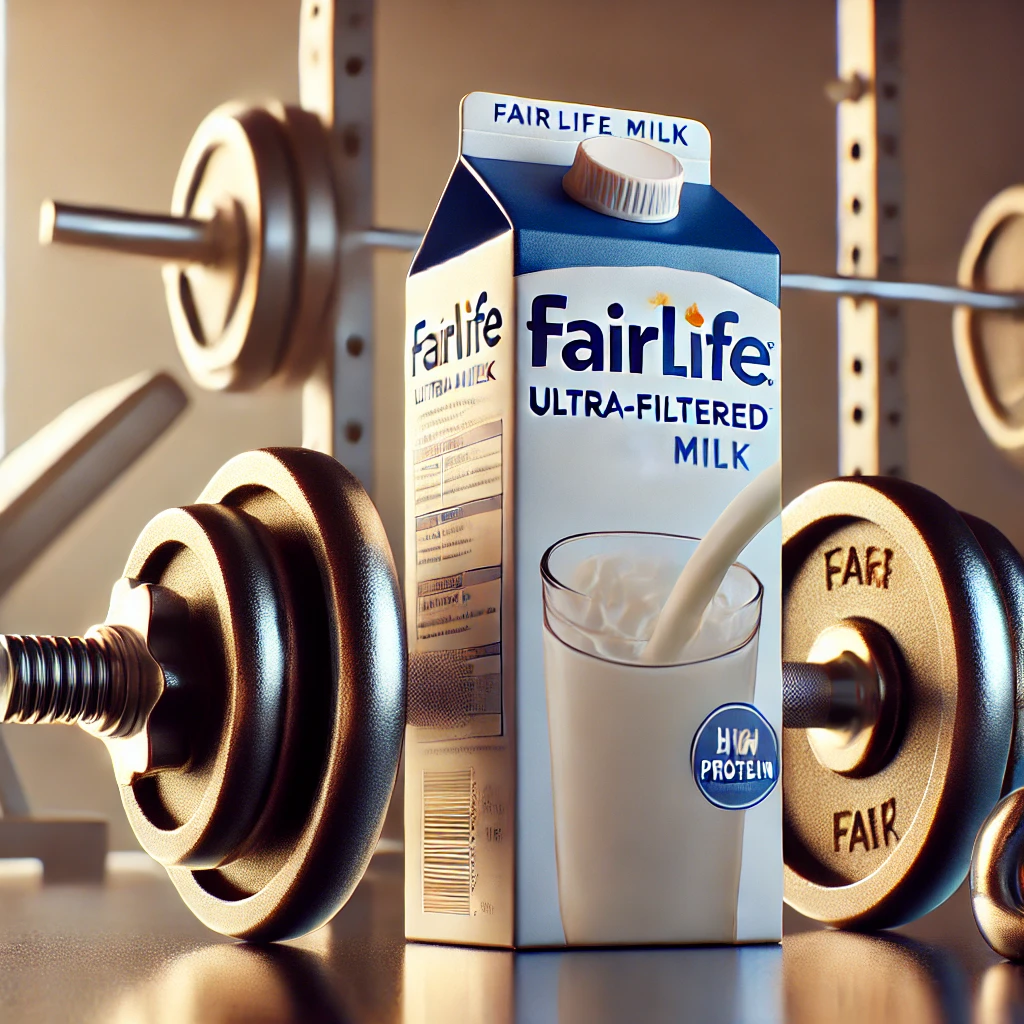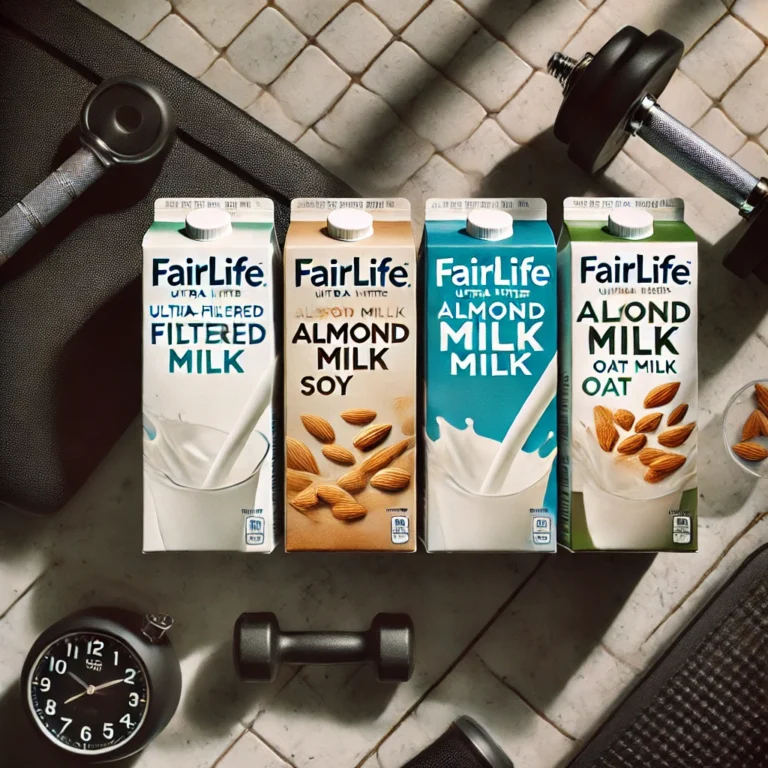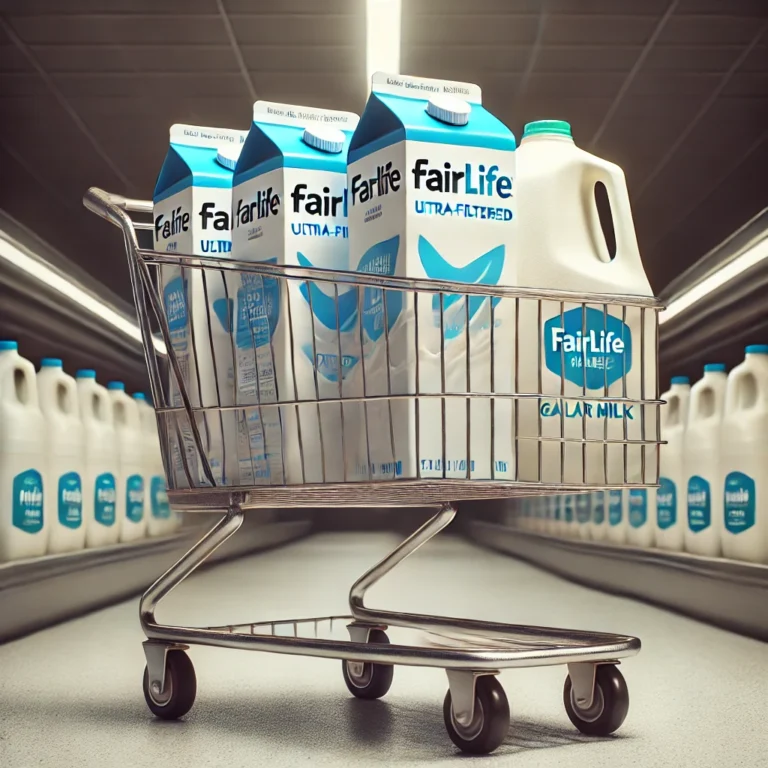
Fairlife milk—fueling your gains with ultra-filtered protein for optimized muscle recovery.
Introduction: Why Milk is a Unique Protein Source
Milk stands out as a complete recovery beverage, thanks to its dual-protein blend of casein and whey. Together, they deliver both fast-acting and slow-release amino acids, ideal for athletes seeking peak muscle recovery. While whey sparks muscle protein synthesis (MPS) immediately after exercise, casein prevents muscle breakdown over extended periods, making milk the perfect balance of anabolic and anti-catabolic effects【62】【66】.
This article breaks down how milk’s proteins work, when to drink it for best results, and how specialized options like Fairlife Ultra-Filtered Milk can enhance recovery.
1. Casein vs. Whey: Key Differences and Benefits
Comparison Table: Casein vs. Whey
| Factor | Whey Protein | Casein Protein |
|---|---|---|
| Digestion Speed | Fast (20-30 minutes) | Slow (6-8 hours) |
| Ideal Timing | Post-workout | Pre-sleep or fasting periods |
| Primary Benefit | Muscle protein synthesis boost | Muscle preservation |
| Best Use | Immediate recovery | Overnight muscle protection |
Whey Protein: The Fast-Acting Sprinter
Whey is digested quickly, entering the bloodstream within 20–30 minutes to boost MPS by up to 68%【62】【66】. This rapid action makes it the top choice for post-workout recovery, delivering an immediate burst of amino acids to repair muscle.
Analogy: Think of whey as an energy drink, delivering nutrients instantly when muscles are primed for growth.
Casein Protein: The Long-Distance Marathoner
Casein, on the other hand, releases amino acids slowly over 6–8 hours, making it ideal for sustained muscle recovery, especially during overnight fasting【63】【64】.
Analogy: Casein is like logs on a campfire—it burns steadily, nourishing muscles through the night.
2. Why Milk’s Blend of Casein and Whey is Perfect for Recovery
Milk’s natural blend of 80% casein and 20% whey offers both immediate and extended benefits. Whey sparks MPS, initiating quick recovery post-workout, while casein provides long-lasting protection, preventing muscle loss during fasting periods【63】【66】.
Scientific Insight: Studies show that both casein and whey stimulate MPS, but whey acts faster, while casein extends amino acid availability for up to 8 hours post-exercise【66】.
Pro Tip: To maximize muscle recovery, try consuming a whey-based protein source after your workout and a glass of milk with casein protein before bed.
3. Practical Use: Timing Your Milk Intake
Post-Workout
For best results, drink 8–12 oz of milk within 30 minutes post-exercise to optimize recovery during the anabolic window, when muscles are most receptive to nutrients【9】.
Before Bed
Having whole or Fairlife milk before sleep delivers a slow-release effect overnight, preserving muscle mass while you rest【9】【63】.
Example Strategy: After lifting, take a whey protein shake for an immediate boost, and have a glass of milk before bed to sustain recovery.
4. Chocolate Milk vs. Protein Shakes: Which is Better?
Chocolate milk, with its 3:1 carb-to-protein ratio, has been shown to equal or even surpass commercial protein shakes for post-workout recovery. The carbohydrates restore glycogen levels, while the protein helps repair muscle fibers【10】.
Fairlife Ultra-Filtered Milk
For athletes needing high protein without lactose, Fairlife milk offers increased protein content and is easier on digestion.
Analogy: Fairlife is like premium fuel—packing in more protein per serving for efficient, high-quality recovery.
5. Scientific Takeaways for Lifters
- Leucine Boost: Whey protein is rich in leucine, a key amino acid for triggering MPS. Casein supports this by maintaining amino acid levels, extending muscle repair【66】【65】.
- Long-Lasting Benefits: Casein can reduce muscle protein breakdown by 34%, while whey maximizes synthesis by 68% post-consumption【62】.
Bottom Line: Combining whey and casein helps keep muscles in an anabolic state, optimizing recovery around the clock.
Conclusion: Milk as the Ultimate Recovery Tool
Milk’s blend of casein and whey offers an ideal recovery solution for athletes. Whey supports quick muscle repair, while casein prevents breakdown over time, keeping muscles strong for the next session. For those with specific dietary needs, products like Fairlife Ultra-Filtered Milk deliver even more targeted benefits with extra protein and lactose-free options.
Curious about the broader benefits of milk in fitness? Explore our comprehensive guide on Milk and Fitness – A Complete Guide to Nutrition and Gains.
FAQ: Milk and Protein Questions Answered
Q: Is milk better than protein shakes for recovery?
Milk’s blend of fast and slow proteins outperforms many single-source protein shakes, making it an excellent choice for complete recovery.
Q: When should I drink milk after a workout?
Aim to drink it within 30 minutes post-exercise for best results.
Q: Can I use chocolate milk instead of a protein shake?
Yes! Chocolate milk’s carb-to-protein ratio supports both muscle repair and glycogen replenishment.
Internal Sources
- Milk and Fitness – A Complete Guide to Nutrition and Gains
Explore the role of milk in fitness, from bulking to recovery. - Fairlife Ultra-Filtered Milk for Muscle Recovery
Learn about the unique recovery benefits of Fairlife for athletes. - Lactose-Free Milk for Fitness
Check out lactose-free milk options for fitness and muscle recovery. - Economics of Milk for Fitness
Discover the cost-effectiveness of different milk types for fitness goals. - Casein vs. Whey in Milk
Learn how milk’s proteins, casein and whey, support muscle growth and recovery.
Sources
- Bodybuilding.com: How Drinking Milk Helps Muscle Growth【8】
- Fitbod: Casein vs. Whey for Recovery【10】
- Ironman Magazine: Casein and Whey Protein Study【66】
- Muscle and Strong: The Role of Whey and Casein【9】【63】
- StrengthLog: Benefits of Casein and Whey【64】
Final Call-to-Action:
Try it for yourself! See how adding milk into your routine can transform your recovery process. Let us know your experience or check out more fitness tips at Paranoid Prophet!


